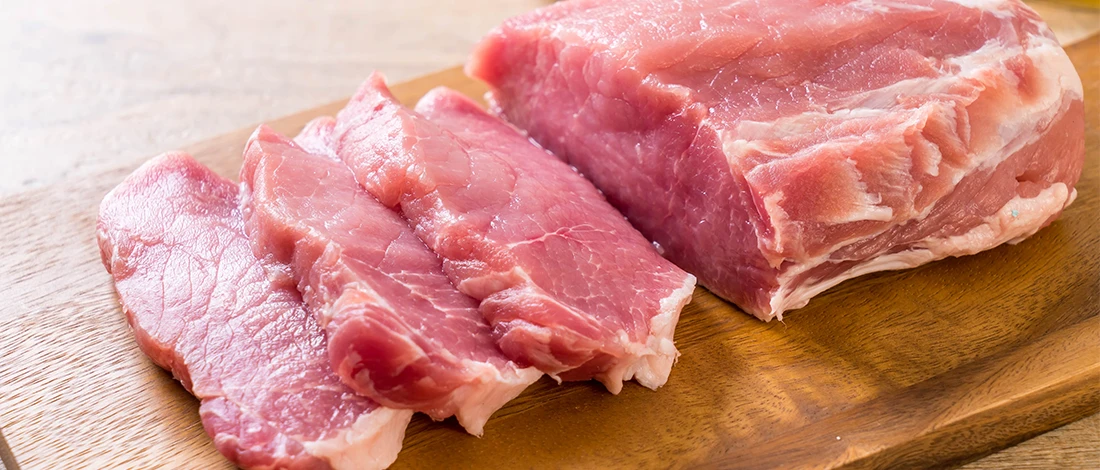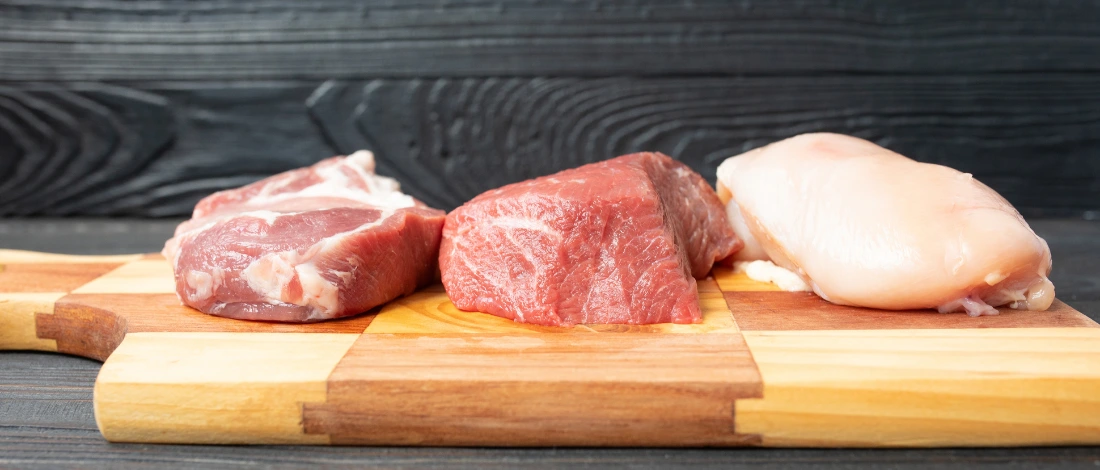As someone who strictly adheres to the carnivorous lifestyle, I frequently get asked whether red meat is healthier than white meat.
To figure this out, I've been researching the red meat vs. white meat debate for the past six weeks. Also, to assess whether choosing one over the other is worthwhile, I solicited expert advice from my nutritionist. Carnivore Style’s team also provided insights from their years of experience in the carnivore diet.
Here's everything I discovered about red meat vs. white meat.
Quick Summary
- White meat is better for weight reduction than red meat since it includes fewer fats and calories.
- Strong myoglobin and iron in the meat muscle fibers give red meat its deeper red color.
- When cooked, white meat dries up faster than red meat when exposed to high heat.
- If you're looking for a trustworthy source for your red and white meats, ButcherBox is my honest meat service recommendation.
What Is Red Meat?
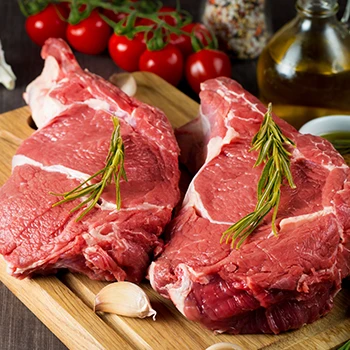
Red meat is a protein source from ruminant mammals like cows, goats, horses, and pigs. Therefore, red meat includes pork, beef, venison, and other game meat.
Because myoglobin, a blood protein, is present in large amounts in these unprocessed or processed meats, they are often red [1].
The color of myoglobin in cooked dark meat depends on the internal temperature of the meat. When beef is cooked rare at 140° F, the red hue of myoglobin does not alter.
But when red meat is medium and well cooked at temperatures above 140° F, it becomes dark brown because myoglobin loses its capacity to bind oxygen [2].
Red meat is very forgiving and can endure high heat when cooking. Therefore, you may roast, braise, or sauté dark meat until it is juicy and tender.
I recommend using a meat thermometer to confirm that the internal temperature of your meat is 165 degrees– the safe temperature level for a well-done steak.
Related Articles:
What Is White Meat?
White meat is chicken, turkey, duck fowl, fish, and other light-colored meats. The idea that myoglobin is absent from white flesh is a misconception.
This protein is present in white meat, although it is considerably less abundant than in red meat.
Red fibers are the heavier, slower-twitch muscle utilized for lengthy actions like standing, while white fibers are the leaner, slow-twitch muscle responsible for short, quick movements [3].
Based on the existence of two fundamental kinds of muscle fibers (red and white muscle fibers), many white meats can be classified as "white meat" or "dark meat.
"Although both forms of meat have concentrations of each fiber, white meat (like chicken breast) comprises predominantly white fibers, and dark meat (like chicken thighs), mostly red fibers.
Key Differences between Red and White Meats
Generally, meat is divided into white and red meat based on certain factors. Here are the key differences between white meat and red meat.
1. Myoglobin Content
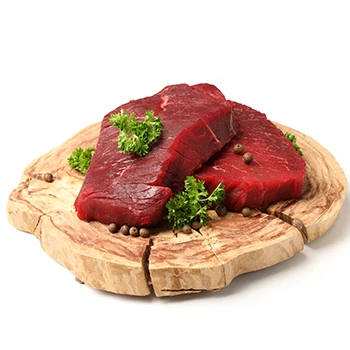
Myoglobin, which gives meat its vivid red color when exposed to oxygen, emerges as the primary pigment responsible for the color of meat.
The reason why red meat is more colorful than white meat is that it contains higher myoglobin content.
Also, mammals have stronger and bigger muscles than poultry. There’s more myoglobin in exercised and active muscles because these muscles require more oxygen to function.
As a result, the red meat/steak from these animals will be deeper in color.
2. Taste and Flavor
When you eat meat, you can differentiate between red and white meat in terms of flavor.
Turkey and chicken are white meats that tend to be bland, whereas red meats have a stronger animal taste.
In my experience, cooking white meat takes less time and has a more delicate flavor than cooking red meat. White meats are juicier when cooked correctly at the proper temperatures, but they can dry quickly under high-temperature cooking.
On the other hand, red meat is fattier and cooks for extended periods, making it juicier. Although red meat pairs well with various flavors and sauces, it also has a more powerful gamey flavor.
3. Texture
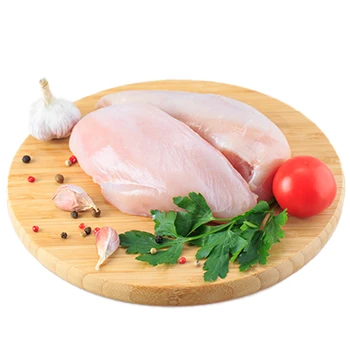
White meat has a harder and more rubbery texture than red meat.
White meat, like chicken breast, tends to harden up when cooked uncovered on the pan or grill since it is made up of fibers that resemble wood. White meat loses most moisture when cooked over high heat, resulting in a dry meal.
On the other hand, red meats have more fatty fibers that prevent the meat from drying out when heated to a high temperature. This explains why most cooked beef steaks are juicer and simpler to peel off the bone.
Additionally, I love how most red meats crisp up on the exterior but leave a moist, meaty interior due to the thick, fatty skin.
"Always strive to eat a balanced mixture of red and white meat meals because both kinds of meat are healthy and nutritionally beneficial in different ways."
- Gavin Van De Walle, Registered Dietician
Nutritional Profile Red Meat vs. White Meat

There's a small gap between the nutritional profile of red meat and white meat. Let's look at how the two types of meat compare in terms of important nutrients like calories, proteins, and fat per the USDA.
1. Protein
Meat is a good source of protein. Approximately 29.80 g of protein make up 100 g of chicken breast, compared to 22.51 g and 27.55 g of protein in equal amounts of lamb and pig.
Since your body can only absorb 74% of the animal protein in unprocessed red meat and 80% in white meat, eating white meat will provide more health benefits [4].
2. Calories
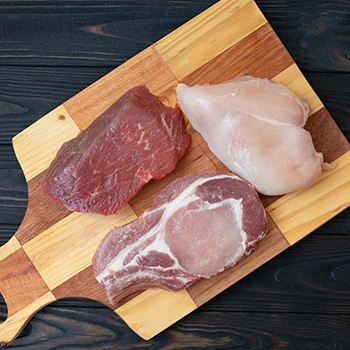
When you eat meat, you’re consuming a good amount of calories as well. Red meat contains 250 calories per 100g, while white meat contains just 155 calories per 100g.
Furthermore, 100g of cooked pork has 240 calories, compared to 100g of cooked turkey breast with 169.
Overall, white meat contains fewer calories than red meat, so I would advise eating it if you're trying to lose weight and on a diet that requires a calorie deficit. However, red meat consumption is great if you want to bulk up faster.
3. Fat
over red meat. For instance, although red pork meat has roughly 45% saturated fat, chicken only has about 11% saturated fat. This means that red meat has around 2.64 times as much saturated fat as white meat.
As a result of its high-fat content, clinical nutrition advises people to reduce red processed meat consumption if they are susceptible to increased risk of cardiovascular disease and diabetes [5].
Generally, both red and white meat provide numerous nutritional benefits.
And while red meat has fewer proteins, it is also rich in the following essential nutrients and minerals:
- Zinc
- Niacin
- Iron
- Vitamin B2 and B3
- Vitamin B12 [6].
Post You May Like: Best Carnivore Diet Supplements
FAQs
Is Pork Red Meat or White?
Pork is red meat because it contains high concentrations of myoglobin, a protein responsible for meat’s dark color.
Is Shrimp Considered Red Meat?
No, shrimp is not considered red meat. In fact, shrimp is not considered meat at all. Shrimp is scientifically classified as seafood, along with fish.
Does Eating Red Meat Make You Gain Weight More than Eating White Meat?
Yes, eating red meat can make you gain weight more than eating white meat because red meat has a higher saturated fat concentration. However, when eaten in moderation, red meat can be part of a healthy diet.
Why Is Chicken Better Than Beef?
Chicken is better than beef because white meat has more proteins, healthy fats, and fewer calories than red meat.
What Red Meats Should You Avoid?
You should avoid processed red meat (bacon, sausages, and salamis) as these have higher sodium and preservatives concentration. Eating processed meat excessively can increase blood pressure and heart disease [7].
Which White Meats Have the Most Protein?
White meats that have the most protein are turkey and chicken breasts. Cooking meat without the skin also lowers the amount of fat and calories you’ll consume.
At Carnivore Style, we understand the importance of choosing the right meat for your health goals. Be sure to explore our other guides for more expert advice on maintaining a balanced carnivore diet and making the best meat choices for your lifestyle.
References:
- https://pubmed.ncbi.nlm.nih.gov/23190143/
- https://www.researchgate.net/figure/Effects-of-myoglobin-forms-on-cooked-meat-color-1-Conversion-from-oxymyoglobin-to_fig1_338057792
- https://pubmed.ncbi.nlm.nih.gov/29725209/
- https://www.ncbi.nlm.nih.gov/books/NBK544256/
- https://pubmed.ncbi.nlm.nih.gov/35220441/
- https://www.ncbi.nlm.nih.gov/pmc/articles/PMC5023012/
- https://www.psu.edu/news/research/story/food-insecurity-certain-meats-linked-increased-high-blood-pressure-risk/#:~:text=Red%20and%20processed%20meats%20are,of%20cardiovascular%20disease%20(CVD).


